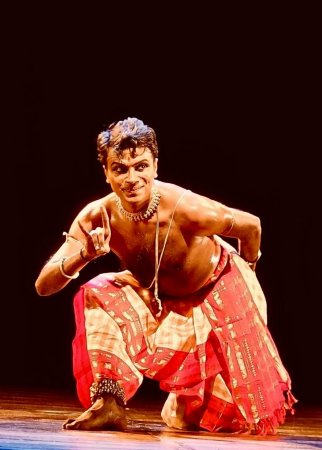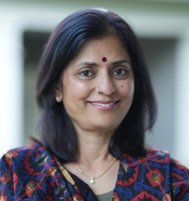
|   |

|   |
A captivating performance where form follows musicality and the mind, the heart - Anita Vallabh e-mail: anitavallabhofficial@gmail.com January 16, 2025 As a practice and performative art, natya embodies an ideological system that teaches us how to perceive our bodies in their most subtle (sukshma) and gross (sthula) forms. Anand Satchidanandan experiences the two in Bhakti. This philosophy has shaped how he harmoniously integrates elements of nritta and abhinaya, presenting them at an unhurried and tranquil pace.  Anand Satchidanandan His performance on December 31, 2024, at Narada Gana Sabha had many evocative moments. He commenced with a crisp rendition of Lakshman Sir's timeless classic, Abhogi Nrittaswaravali. He used his body, particularly his long limbs, to full effect, reaching out as he moved sideways, extending forward as he turned, and completed each dance phrase in perfect synchrony to the rhythm of the music. It was a joy to watch him remain true to the intent of the choreographer. He then presented a padam in ragamalika, Nee uraipai Hanumane, and a virutham, Maulau ganga shashankau by Appayya Dikshitar. In this devotional song, the devotee humbly requests Lord Shiva to eternally reside within his heart, paving the way for the Tanjore Quartet varnam - Sadaya ikka talajalanura. Anand's rendition of this varnam was particularly noteworthy for the seamless integration of nritta and abhinaya. Nritta is frequently perceived as facilitating the transition between ideas expressed in the pallavi, anupallavi, and chittaswaram. However, in Anand's virtuosic choreography and performance, the jati and sahitya mutually informed each other. During my conversation with Anand, he emphasized that the emotional clarity and seamless flow of movement and mimesis were informed by his research into the musicality of the swarajati itself - its lyrics, tala, and mood of the raga, and the skillful composition of jatis by Venkatakrishnan in the required kalapramanam. In the sanchari bhava, Anand masterfully explored the theme of Vipralambha Sringara (love in separation) by transcending conventional gender specific narratives into gender neutral narratives. The nayaka yearns for an eternal union with the Lord of Brihadeeshwara, Shiva. Unlike the milkman who delivers milk to the temple for a ritualistic bath, only to receive a small portion as prasadam, or the flower girl who offers a garland and receives a single flower in return, the nayaka desires to always receive boundless love and blessings of the lord. The subtle gestures and emotional depth of his abhinaya eloquently conveyed the profound yearning for love, and the universal sentiment of love, longing, and devotion. Anand was ably supported by his musical team consisting of Binu on the vocal, Vijay Kumar on the nattuvangam, Sivaprasad on the mridangam, Shrievats on the veena and Sunil Kumar on the flute. Regrettably, due to time constraints, his rendition of Sant Tukaram's Abhang, Sundar te dhyan, was shortened. While this was unfortunate, instances such as these underscore the imperative of allocating adequate time for programs and raise questions about the curators' intentions. Is it acceptable to compromise the experience of rasa in favor of quantity? In Anand's immersive performance lies the answer.  Anita Vallabh is an Adjunct professor at the University of Hawaii, author, Yoga instructor and dance critic. She lives in Boston, USA. |